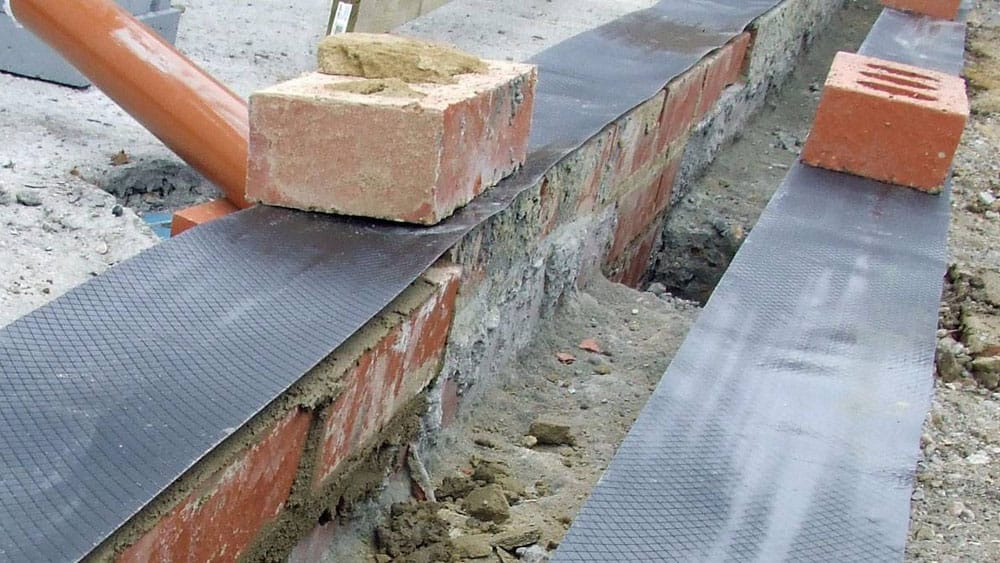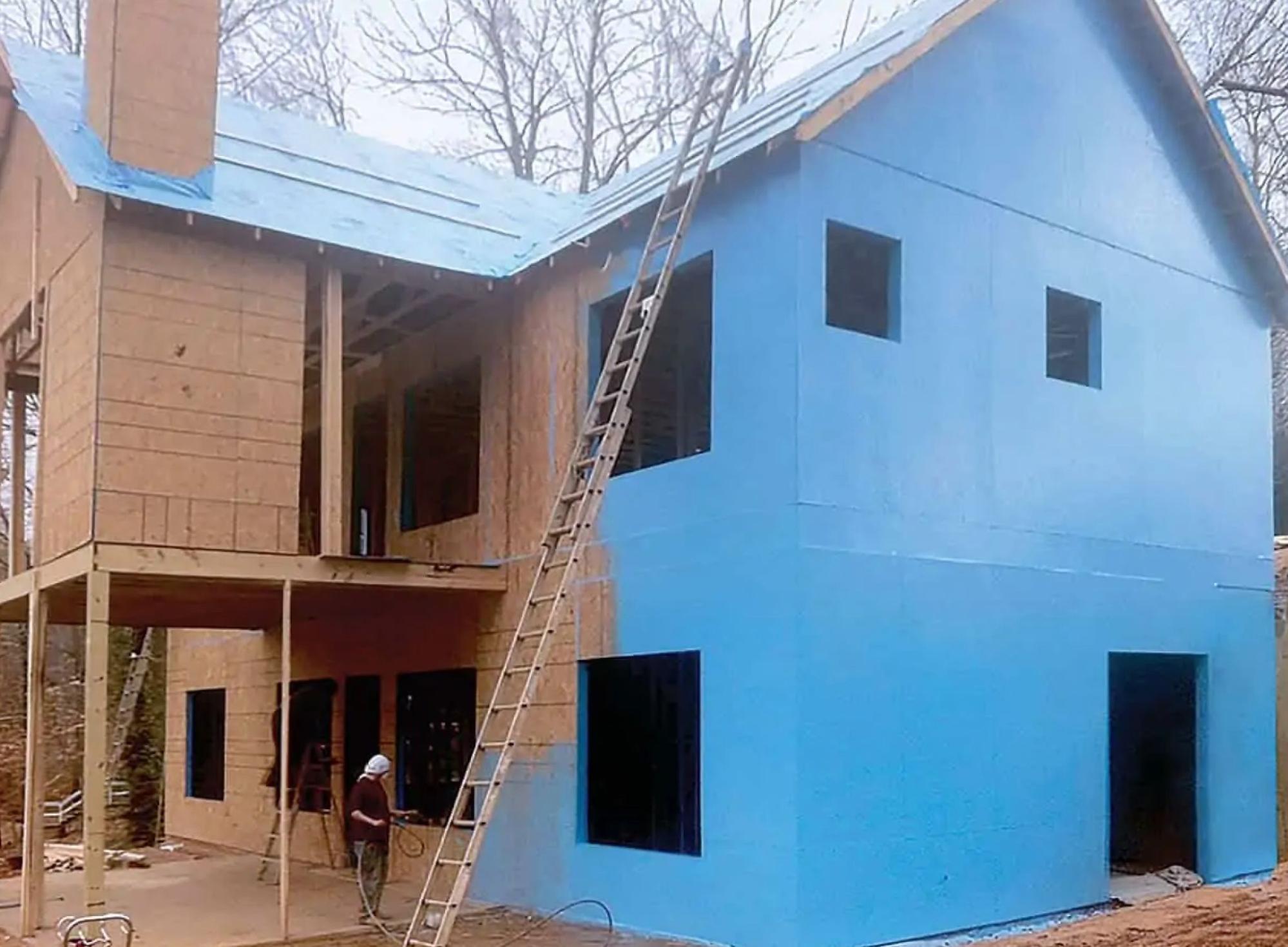How to tell condensation, rising, and penetrating damp with help from damp proofing newcastle
How to tell condensation, rising, and penetrating damp with help from damp proofing newcastle
Blog Article
Checking Out the Various Strategies and Solutions for Effective Damp Proofing
Wetness in buildings positions substantial obstacles to both structural integrity and indoor air high quality. Different strategies and remedies have actually arised to battle this prevalent concern. From traditional damp-proof membrane layers to cutting-edge chemical treatments, each method offers special benefits. Recognizing these options is important for efficient moisture control. However, picking the right solution depends on specific building conditions and requirements, triggering additional expedition into the most efficient moist proofing techniques available.
Recognizing the Reasons For Wetness
Dampness can emerge from different resources, understanding these reasons is vital for efficient remediation. Typically, wetness stems from three primary sources: climbing moist, penetrating wet, and condensation. Increasing damp takes place when groundwater travels upwards via permeable products, such as brick or rock, usually because of a lack of a reliable barrier (mould removal newcastle). Penetrating wet is usually brought on by external aspects, consisting of roofing system leakages, malfunctioning seamless gutters, or damaged wall surfaces, allowing water to penetrate a residential property. Condensation, on the other hand, arises from excess wetness airborne, typically aggravated by bad air flow and temperature differences, bring about water droplets basing on surfaces. Recognizing these underlying problems is necessary, as each sort of dampness needs a customized strategy for remediation. Correct assessment aids in establishing the most effective options, inevitably protecting the architectural stability of a building and enhancing indoor air top quality
Traditional Damp-Proof Membrane Layers

Chemical Damp-Proofing Solutions
Chemical damp-proofing services use a cutting-edge strategy to avoid moisture intrusion in buildings. These techniques normally include the application of fluid chemicals that permeate masonry and form an obstacle versus increasing damp. Commonly used chemicals consist of silanes, siloxanes, and various other water-repellent representatives that react with surface materials to create a hydrophobic layer.The application procedure typically calls for exploration holes into the wall surfaces, infusing the chemical option, and enabling it to treat. This method is particularly useful for older structures where typical damp-proof membrane layers might be not practical. Chemical damp-proofing can be much less turbulent and much more affordable than considerable remodelling projects.While effective, these options depend on proper application and environmental problems for peak efficiency. mould treatment newcastle. Regular upkeep and surveillance are necessary to guarantee the durability of the damp-proofing therapy. Generally, chemical damp-proofing stands for a flexible option for securing structures against moisture-related damages
Cavity Wall Surface Construction Methods
Cavity wall surface building and construction techniques use numerous advantages, specifically in moisture control and energy performance. By including an air gap in between 2 layers of masonry, these walls successfully mitigate water ingress while improving insulation. This mix not only protects structures from dampness but additionally adds to minimized energy intake.
Advantages of Cavity Walls
When taking into consideration reliable wet proofing methods, the advantages of tooth cavity wall surfaces attract attention plainly. Dental caries wall surfaces include two separate layers, creating an air gap that successfully lowers moisture infiltration. This style decreases the threat of wetness, as the external wall surface works as an obstacle versus rainfall and water access. In addition, dental caries wall surfaces boost thermal insulation, which adds to power performance by lowering warm loss. They additionally supply audio insulation, assisting to produce a quieter indoor environment. The air space enables for ventilation, which helps in dampness control and lowers the likelihood of mold growth. These benefits not only enhance the general comfort of a building however additionally add to its longevity and architectural stability.
Wetness Control Strategies
Reliable wetness control techniques are important in dental caries wall building and construction to ensure lasting protection versus dampness. One main approach includes the unification of weep holes, which promote water drainage from the tooth cavity, protecting against build-up. In addition, making use of breathable membranes can help manage wetness levels while permitting caught vapor to leave. Appropriate positioning of insulation is also essential, as it ought to not obstruct water drainage courses. Moreover, guaranteeing that the external fallen leaves of the cavity wall are built with water-resistant products enhances general longevity. Routine maintenance checks are necessary to recognize any kind of obstructions or damage early, securing the structure's stability. Eventually, a mix of these techniques forms a durable defense versus wetness breach in dental caries wall surfaces.
Insulation and Power Performance
Insulation plays an essential duty in boosting power effectiveness within tooth cavity wall construction. By incorporating protecting materials, these walls develop a thermal obstacle that lessens warm loss and decreases energy consumption. Effective insulation not only helps maintain a secure interior temperature level however likewise reduces the danger of dampness, as it prevents condensation within the wall surface dental caries. Different methods, such as the use of rigid foam boards or mineral woollen, can be used to accomplish optimal insulation performance. Additionally, correct setup is vital to ensure that gaps and spaces are minimized, which can or else jeopardize energy performance. Inevitably, a well-insulated tooth cavity wall surface adds considerably to total sustainability and reduces cooling and heating costs for property owners.
External Damp Proofing Methods
Exterior damp proofing methods are essential for shielding structures from dampness infiltration. 2 efficient strategies consist of the application of waterproof membranes and the setup of French drains pipes. These options aid reduce water buildup and preserve the stability of structures.
Waterproof Membrane Application
While different approaches exist for stopping dampness ingress, the application of water resistant membrane layers remains an extremely reliable outside wet proofing technique. These membranes are generally made from materials such as polyethylene, rubber, or customized asphalt, providing a robust barrier against water infiltration. The setup procedure involves applying the membrane to the outside surface areas of structures or wall surfaces, guaranteeing full protection to stop leakages. Correct attachment and securing at joints are vital to maximizing effectiveness. Water-proof membranes can be used in various types, including liquid finishes and sheet membrane layers, enabling adaptability based upon the details needs of the framework. This method not just shields structures from moisture yet additionally boosts their long life and structural integrity.
French Drain Installation
One reliable approach for taking care of groundwater and stopping wetness build-up around a building's structure is the installation of a French drain. This drainage system contains a trench filled with crushed rock and a perforated pipeline that reroutes surface area water away from the foundation. Proper installation requires mindful preparation, making certain that the drainpipe inclines away from the structure to facilitate perfect water flow. Additionally, the area of the drainpipe is essential; it must be positioned in areas prone to merging or excess wetness. Routine maintenance, consisting of cleaning debris from the gravel and ensuring the pipeline stays unblocked, is vital for long-term performance. Inevitably, a well-installed French drain can considerably decrease the risk of water-related concerns in structures and basements.
Interior Waterproofing Approaches
Interior waterproofing strategies are crucial for securing a building's inside from wetness infiltration and possible water damages. These strategies typically include the application of specific products and strategies created to create here a moisture obstacle within the structure. One common strategy is making use of waterproof finishings or sealants on wall surfaces and floors, which prevent moisture from penetrating surfaces.Additionally, installing indoor drainage systems, such as sump pumps, can efficiently take care of water accumulation in basements and crawl areas. An additional method involves using vapor barriers, which are mounted to inhibit moisture motion from the ground into living spaces.Moreover, resolving any cracks or spaces in walls or structures with proper sealants assures a comprehensive defense against water breach. By implementing these interior waterproofing methods, residential or commercial property owners can significantly minimize the threat of mold development, structural damage, and other moisture-related problems. Correct implementation of these techniques is vital for lasting defense and structure honesty.
Routine Maintenance and Evaluation Practices
Routine maintenance and inspection practices are essential for assuring the lasting performance of moist proofing options in any type of building. Regular checks make it possible for homeowner to determine early indicators of wetness invasion, such as peeling off paint, mold and mildew development, and mildewy smells. These signs can signal underlying problems that need immediate attention.Inspections need to be performed at least yearly, concentrating on prone areas like cellars, creep spaces, and exterior wall surfaces. Throughout these assessments, homeowner should take a look at sealers, drain systems, and ventilation to verify they operate correctly.Additionally, keeping downspouts and rain gutters is vital, as blocked systems can lead to water buildup near the foundation. Implementing a normal upkeep schedule, in addition to prompt repair work, can considerably expand the life expectancy of damp proofing procedures and safeguard the architectural stability of the building. Aggressive steps inevitably contribute to the total wellness and safety of the living setting.
Frequently Asked Inquiries
Exactly How Lengthy Does Damp Proofing Usually Last?
The period of moist proofing performance varies, typically lasting between 20 to half a century. Variables such as application quality, ecological conditions, and upkeep methods considerably influence the long life of the wet proofing treatment.

Can I Damp Evidence My Home Myself?
The individual contemplated the usefulness of do it yourself damp proofing. With appropriate research and the ideal materials, it is feasible. They also recognized the relevance of expert assistance to guarantee durable efficiency and prevent future concerns.
What Are the Indications of Ineffective Damp Proofing?
Indications of inadequate damp proofing consist of consistent musty odors, noticeable mold and mildew growth, peeling paint, moist spots on wall surfaces, and wood decay - damp removal newcastle. House owners need to resolve these problems without delay to avoid additional damages and health issues
Does Damp Proofing Affect Indoor Air High Quality?

Just How Much Does Expert Damp Proofing Expense?
Professional wet proofing expenses vary considerably, typically ranging from $1,000 to $5,000 depending on the residential or commercial property's dimension, the degree of the damp concern, and selected methods. Each scenario needs a tailored analysis for precise pricing. Generally, moisture originates from 3 main sources: rising wet, permeating moist, and condensation. When taking into consideration efficient wet proofing approaches, the benefits of cavity walls stand out prominently. Outside moist proofing approaches are essential for safeguarding structures from wetness infiltration. While different techniques exist for protecting against dampness access, the application of water-proof membrane layers continues to be a very reliable exterior wet proofing strategy. Indicators of inadequate wet proofing consist of relentless mildewy smells, visible mold growth, peeling paint, damp spots on wall surfaces, and wood decay.
Report this page